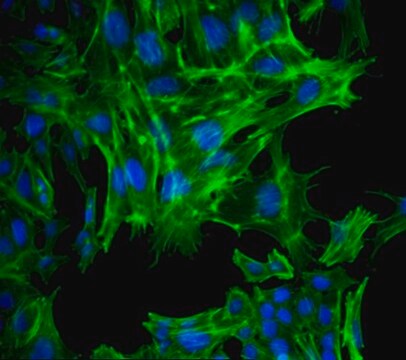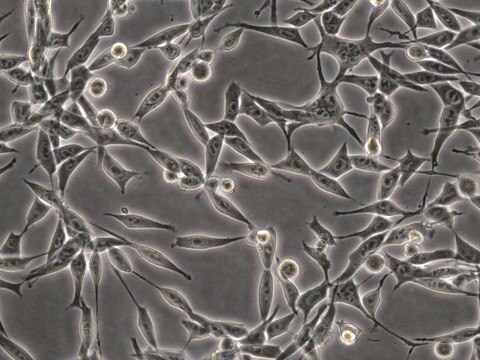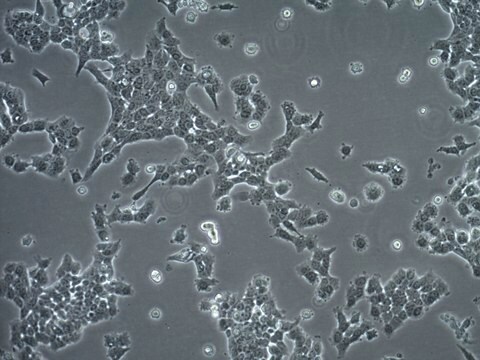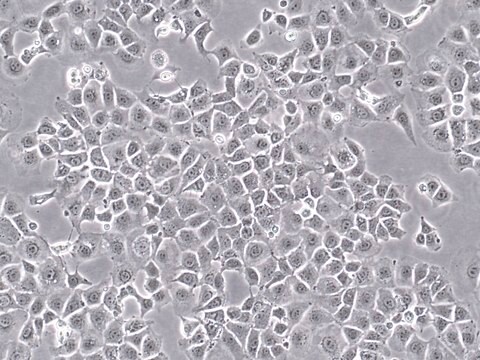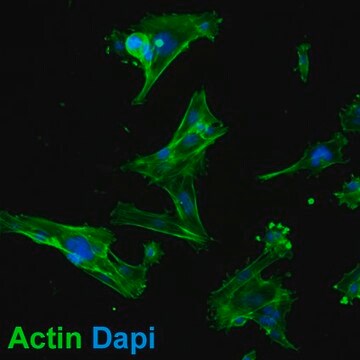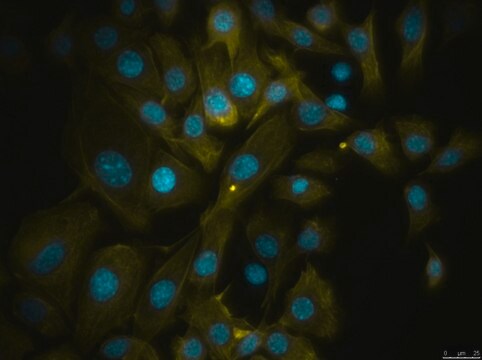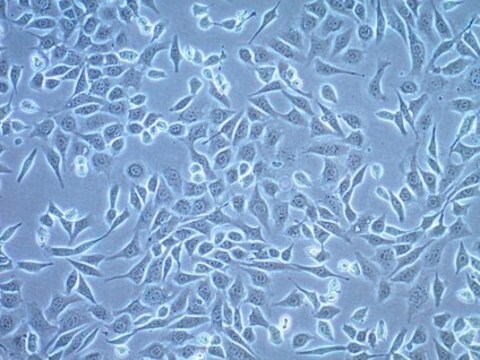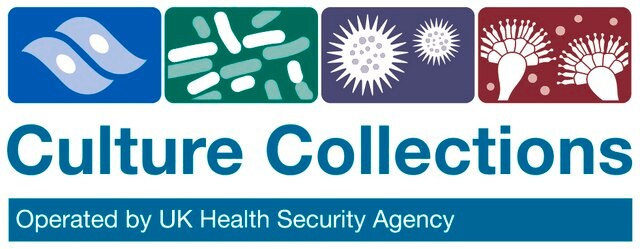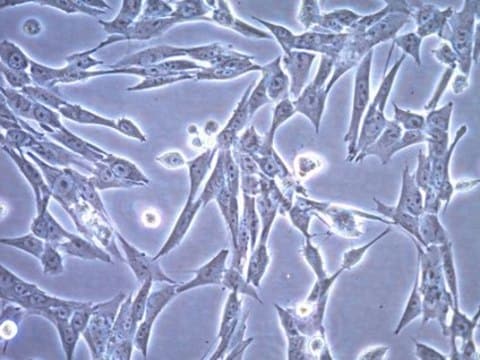SCC177
TS/A Mouse Mammary Adenocarcinoma Cell Line
Mouse
Sinônimo(s):
TSA
About This Item
Produtos recomendados
Nome do produto
TS/A Mouse Mammary Adenocarcinoma Cell Line, TS/A mouse mammary adenocarcinoma cell line is a well characterized and highly published model for breast cancer research.
fonte biológica
mouse
técnica(s)
cell culture | mammalian: suitable
Condições de expedição
ambient
Categorias relacionadas
Descrição geral
The TS/A cell line was isolated from a mammary adenocarcinoma that arose spontaneously in a BALB/c female mouse (1).
Descrição de linhagem celular
Aplicação
Cancer
Oncology
Qualidade
• Cells are tested negative for infectious diseases by a Mouse Essential CLEAR panel by Charles River Animal Diagnostic Services.
• Cells are verified to be of mouse origin and negative for inter-species contamination from rat, chinese hamster, Golden Syrian hamster, human and non-human primate (NHP) as assessed by a Contamination CLEAR panel by Charles River Animal Diagnostic Services.
• Cells are negative for mycoplasma contamination.
Exoneração de responsabilidade
Código de classe de armazenamento
12 - Non Combustible Liquids
Classe de risco de água (WGK)
WGK 2
Ponto de fulgor (°F)
does not flash
Ponto de fulgor (°C)
does not flash
Certificados de análise (COA)
Busque Certificados de análise (COA) digitando o Número do Lote do produto. Os números de lote e remessa podem ser encontrados no rótulo de um produto após a palavra “Lot” ou “Batch”.
Já possui este produto?
Encontre a documentação dos produtos que você adquiriu recentemente na biblioteca de documentos.
Nossa equipe de cientistas tem experiência em todas as áreas de pesquisa, incluindo Life Sciences, ciência de materiais, síntese química, cromatografia, química analítica e muitas outras.
Entre em contato com a assistência técnica